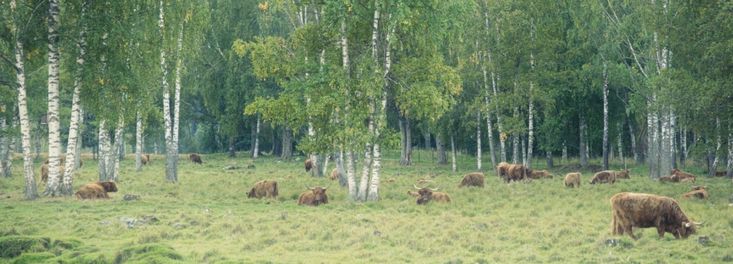Silvopasture: A Key to Sustainable Agriculture and Livestock Management
Introduction:
In recent years, there has been a growing interest in sustainable agriculture practices that prioritize the well-being of both the land and animals. Silvopasture, an innovative method that combines forestry with livestock grazing, is gaining attention as a successful approach to achieving this balance. This article will delve into some inspiring case studies and success stories of farmers who have implemented silvopasture systems on their homesteads.
Case Study 1: The Johnson Family Farm
The Johnson family farm, located in the heartland of Iowa, faced several challenges when it came to managing their livestock while maintaining soil health. They decided to embrace silvopasture by integrating trees into their pasture system. By planting rows of nut-bearing trees like oak and hickory alongside their grazing areas, they created shaded spaces for the animals during hot summer months. Not only did this provide relief from extreme temperatures but it also reduced heat stress in their cattle herd.
Additionally, these trees served as windbreaks during harsh winter weather conditions, minimizing cold drafts and preventing snowdrifts from accumulating in open fields. As a result, the Johnsons observed improved animal comfort throughout all seasons.
Furthermore, incorporating tree cover increased biodiversity on their farm by attracting various bird species that helped control insect populations naturally. The Johnsons noticed a significant reduction in pests such as flies due to this symbiotic relationship between birds and livestock.
Case Study 2: The Ramirez Ranch
In Texas Hill Country, drought-prone pastures present ongoing challenges for ranchers like the Ramirez family. Seeking sustainable solutions led them to adopt silvopasture practices on their property.
By strategically planting native hardwood species such as pecan and mesquite trees within grazing areas near natural water sources like creeks or ponds, the Ramirezes were able to create microclimates that encouraged better water retention in the soil. The trees acted as natural sponges, absorbing excess rainwater and preventing runoff.
The shade provided by these trees not only protected livestock from scorching temperatures but also reduced evaporation rates, ensuring a more consistent water supply for both animals and vegetation. As a result, the Ramirez Ranch experienced improved forage growth throughout the year, even during drought periods.
Furthermore, the pecan trees introduced an additional income stream to their operation. The family started harvesting and selling pecans, diversifying their farm’s revenue sources while maintaining ecological balance within their silvopasture system.
Case Study 3: The Anderson Homestead
In Oregon’s Willamette Valley, where heavy rainfall is common, the Andersons sought ways to address soil erosion issues caused by intense downpours on their homestead. They implemented silvopasture practices that combined rotational grazing with tree plantings of Douglas fir and red alder.
By dividing their pasture into smaller paddocks and rotating livestock through them periodically, the Andersons allowed time for grasses to recover between grazing cycles. This approach significantly reduced soil compaction created by constant trampling of hooves in concentrated areas.
The addition of trees played a crucial role in managing excessive moisture levels in the soil. Their deep root systems helped control erosion by stabilizing slopes prone to landslides during heavy rains. Moreover, these trees enhanced nutrient cycling by capturing nitrogen from animal waste and transferring it back into the ecosystem through leaf litter decomposition.
As a bonus benefit of their silvopasture implementation, the Andersons were able to utilize timber harvested from mature Douglas fir trees as a sustainable source of fuelwood for heating during winter months.
Conclusion:
These case studies demonstrate how farmers across different regions have successfully implemented silvopasture systems on their homesteads to achieve sustainable agriculture practices and optimal livestock management. By integrating forestry with grazing activities, these farmers have enhanced their land’s resilience, improved animal welfare, and diversified their income sources. Silvopasture is proving to be a key strategy for creating a harmonious balance between agriculture and the environment, paving the way for more sustainable farming practices in the future.


Leave a comment